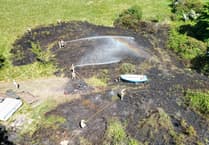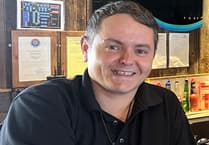Farmer Paula Creer took her Belted Galloway calf, Jelly, and Teeswater/Swiss Valais Blacknose cross lamb, Oof, to visit the children at Ballasalla School on Friday.
With her were Sarah Comish and Carolyn Lace from the Manx National Farmers’ Union.
This was one of a series of school visits the union has been carrying out in recent weeks, to introduce younger children to the Countryside Code through the medium of a lovely book, written by Carolyn, and starring the real life characters, Jelly and Oof. It is beautifully illustrated by artist Stephanie Quayle.
The children who took part at Ballasalla School were all in the the Reception and Year One classes. They sat in the classroom listening as Carolyn read the book to them, and pages from the story came up on the screen behind her for them all to see.
The idea of the book is that it is very much an interactive experience, inviting the children to decide for themselves whether they think a situation is potentially good or bad. The story begins with Jelly and Oof finding a gate left open and going off to explore.
‘Do you think the gate should have been left open? Do you think they should have gone through the gate?’ asks Carolyn and all the children chorus ‘No’.
‘Why not?’ she asks.
Hands shoot up and from the answers they give it’s obvious that even children this young understand the dangers for animals being let out of their field by a gate carelessly left open.
It’s the same for the other situations that Jelly and Oof’s adventure leads them into, including the little boy playing on an unattended tractor and the barbecue left smouldering in a field. And they all chorus ‘Eeeuw’ when the two little animals discover a poo bag that has been left lying around.
However, the highlight of the visit comes when they all troop out into the playground to meet the real life stars of the story, Jelly and Oof who both clearly love the children and love all the attention.
Carolyn said: ‘We are here to talk to the children about the Countryside Code which is about responsible behaviour to support our farmers and help preserve our beautiful countryside.’
It’s plain that these youngsters have a better idea of caring for the environment and rural life than many adults and visits like these can help to reinforce that.





Comments
This article has no comments yet. Be the first to leave a comment.